Dennis Tito
description: an American engineer and entrepreneur, best known as the first space tourist to fund his own trip to the International Space Station.
21 results
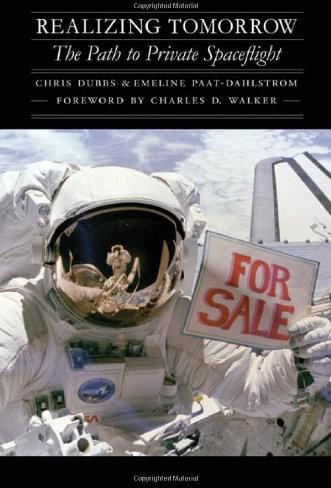
Realizing Tomorrow: The Path to Private Spaceflight
by
Chris Dubbs
,
Emeline Paat-dahlstrom
and
Charles D. Walker
Published 1 Jun 2011
On the Russian side (left) can be seen Alexander Derechin, Victor Legostaev, Yuri Semyonov, a translator, and Valery Ryumin. On the American side are Jeffrey Manber, Gus Gardellini, and Walt Anderson. Not seen are John Jacobson and RickTumlinson. Jacobson/Gardellini. 15. Dennis Tito (left) with crewmates Talgat Musabayev (center) and Yuri Baturin (right) prior to launch at the Baikonur Cosmodrome, 28 April 2oo1. Courtesy of Space Adventures, Ltd. i6. Every private-paying space tourist to date from Dennis Tito to Guy La Liberte has launched on a Soyuz rocket. The same pad used for Yuri Gagarin in i96i is still in use today to launch crews to the International Space Station. Courtesy of Space Adventures, Ltd. 17.
…
STS 51-D payload specialists 9. Bill Nelson preparing to eat a freshly peeled grapefruit to. The Soyuz TM-zo space crew it. Helen Sharman during a medical examination 12. Alexei Leonov seeing off the Soyuz TM-za crew 13. Walt Anderson standing in front of a Soyuz capsule 14. Negotiating the MirCorp lease 15. Dennis Tito, Talgat Musabayev, and Yuri Baturin, z8 April zoos 16. Soyuz rocket 17. Anousheh Ansari 18. Eric Anderson and Richard Garriott 19. Gary Hudson next to Rotary Rocket's Roton ATv zo. Roton ATV on display zi. Jeff Greason in front of xcOR's Ez-Rocket vehicle zz. Rick Searfoss in front of the Ez-Rocket 23.
…
Completely financed by MirCorp, a Soyuz spacecraft carried cosmonauts Sergei Zaletin and Alexander Kaleri to Mir to bring it out of its hibernation and prepare it for human occupancy. Ironically, the piece of the business plan that the press found most laughable was the piece that fell into place most quickly. When Rick Tumlinson spoke at a space tourism conference about MirCorp, a former NASA scientist turned financial consultant named Dennis Tito happened to be in the audience. During the Apollo era, Tito had worked at the Jet Propulsion Laboratory plotting rocket trajectories. He parted company with NASA during its massive cutbacks in the early 1970s and went on to study finance at the University of California, Los Angeles. Forming the investment firm Wilshire Associates, Tito attacked the stock market as though it were a rocket trajectory, using computer modeling and mathematical analysis.
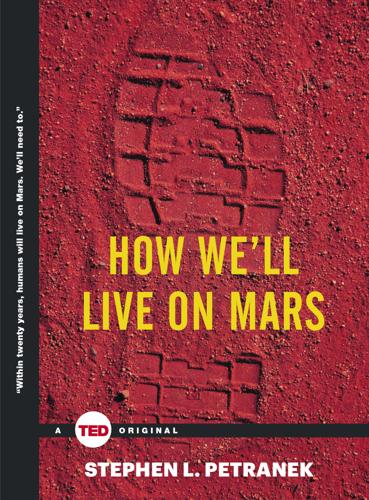
How We'll Live on Mars (TED Books)
by
Stephen Petranek
Published 6 Jul 2015
More recently, Dutchmen Bas Lansdorp and Arno Wielders formed the nonprofit Mars One to launch one-way trips to the Red Planet, which they say are scheduled to land in 2025 (after previously landing cargo craft, habitats, and rovers). It plans to pay for the venture by selling broadcast rights. However, the group not only doesn’t have a rocket or space-craft that will get it there, it has only recently signed a contract with Lockheed Martin to study the feasibility of creating such things. Then there is Dennis Tito, the first private citizen to buy his way into space by paying the Russians a reported $20 million. His nonprofit organization, Inspiration Mars, optimistically plans to send a small spacecraft—perhaps the Crew Dragon spacecraft under development by SpaceX for manned flights to the International Space Station—to Mars with a married couple aboard in 2021.
…
SpaceX designed the Dragon spacecraft for delivering crew and cargo to Earth orbit. CEO Elon Musk has a far larger and more complex spacecraft in mind for a Mars journey. The Crew Dragon, SpaceX’s next-generation spacecraft, can carry seven astronauts. It is targeted to launch by 2017 under NASA’s Commercial Crew program. Inspiration Mars, a nonprofit founded by Dennis Tito, has proposed using the Crew Dragon spacecraft for a 580-day husband and wife flyby of Mars in 2021. The SpaceX Falcon 9 rocket (pictured) and Dragon spacecraft completed six cargo trips to and from the International Space Station within the past three years. Currently in development, the Falcon Heavy rocket will be the most powerful rocket in operation and will be capable of launching manned flights to the moon and even Mars.
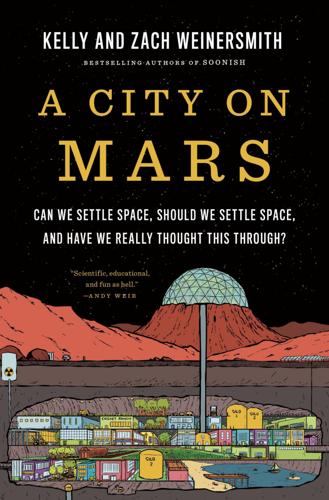
A City on Mars: Can We Settle Space, Should We Settle Space, and Have We Really Thought This Through?
by
Kelly Weinersmith
and
Zach Weinersmith
Published 6 Nov 2023
“The Space Industry Will Be Worth Nearly $3 Trillion in 30 Years, Bank of America Predicts.” CNBC, October 31, 2017. https://www.cnbc.com/2017/10/31/the-space-industry-will-be-worth-nearly-3-trillion-in-30-years-bank-of-america-predicts.html. ———. “Space Tourism Pioneer Dennis Tito Books Private Moon Trip on SpaceX’s Starship.” CNBC, October 12, 2022. https://www.cnbc.com/2022/10/12/spacex-starship-seats-space-tourism-pioneer-dennis-tito-books-private-moon-trip.html. Shelhamer, Mark. “Enabling and Enhancing Human Health and Performance for Mars Colonies: Smart Spacecraft and Smart Habitats.” In The Human Factor in a Mission to Mars: An Interdisciplinary Approach, edited by Konrad Szocik, 59–67.
…
This will render the snuggle tunnel obsolete, but the Chevy will remain about as desirable as it ever was. The optimal gravity setting will be left as an exercise for future generations. So much for physics; what about biology? The evidence suggests that the flesh is willing. Space-tourist Dennis Tito reported astro-erections, and Space Shuttle veteran Mike Mullane wrote, no doubt with an eye toward the history books, “I had an erection so intense it was painful. I could have drilled through kryptonite.” Kryptonite is not known for its hardness so much as its Superman-withering abilities, but reading between the lines Mullane seems to have been available for mating opportunities.
…
Oberg, Pioneering Space: Living on the Next Frontier (New York: McGraw-Hill, 1985), 188–89. GO TO NOTE REFERENCE IN TEXT And then, best of all: T. A. Heppenheimer, Colonies in Space (New York: Warner Books, 1980), 209. GO TO NOTE REFERENCE IN TEXT Space-tourist Dennis Tito: Mike Mullane, Riding Rockets: The Outrageous Tales of a Space Shuttle Astronaut (New York: Scribner, 2007), 176. GO TO NOTE REFERENCE IN TEXT Desire appears to be: Mary Roach, Packing for Mars: The Curious Science of Life in the Void (New York: W. W. Norton & Co., 2010), 59.
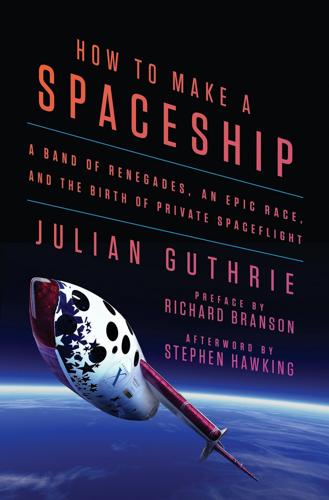
How to Make a Spaceship: A Band of Renegades, an Epic Race, and the Birth of Private Spaceflight
by
Julian Guthrie
Published 19 Sep 2016
He’d had a quick conference call the week before with Elon and Adeo, thought they said all the right things, and took Elon’s accent to be British. Adeo made Peter laugh knowingly when he said, “I think every geek is a bit of a space buff.” Peter talked about Blastoff, the XPRIZE, ZERO-G, and Space Adventures, his company with Eric Anderson, which had brokered the final part of the deal to send the world’s first space tourist, Dennis Tito, to the International Space Station aboard a Russian Soyuz spacecraft for $20 million. Peter talked briefly about how NASA had tried to stop Tito from flying, but Tito had launched on April 28 and landed safely in Kazakhstan on May 6. It was big news in space circles that Tito, an American, had to fly with Russian cosmonauts and was not allowed on the U.S. side of the space station.
…
Amir felt guilty for having given up on his space dream so easily compared with Peter. He and Anousheh both grew up watching Star Trek in Iran and dreaming of interplanetary travel. But no one from Iran had ever flown in space. NASA was not taking paying customers up there. There had been only two tourists—Dennis Tito and South African entrepreneur Mark Shuttleworth—and they’d forked over tens of millions of dollars for rides into orbit aboard Russian launchers. Anousheh listened to Peter in that first meeting and tried not to smile. She had never met anyone with Peter’s passion and commitment. With this guy, if you close one door, he’s going to open another, she thought.
…
Erik Lindbergh was nearby, along with the Ansari family, and Pete Worden, now brigadier general in charge of the U.S. Air Force’s center for space transformation. A few seats away in the crowd was millionaire adventurer Steve Fossett, whose GlobalFlyer was being built by Burt to try to set a speed record for an around-the-world solo flight. Also present was space tourist Dennis Tito, and Kevin Petersen, head of NASA’s Dryden Flight Research Center. Buzz Aldrin was in the front row. Burt was introduced by Academy Award–winning actor and good friend Cliff Robertson. Suffering from a terrible cold and a hoarse voice, Burt began, “This is not just the development of another research aircraft.
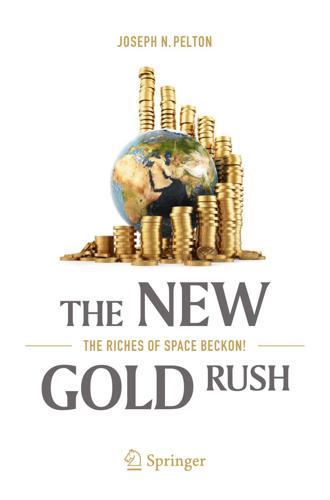
The New Gold Rush: The Riches of Space Beckon!
by
Joseph N. Pelton
Published 5 Nov 2016
These “citizen astronauts” were somehow persuaded to pay amounts that started at $20 million a trip, which escalated to $25 million, $35 million, $40 million and then over $50 million. Eric’s company is even offering a trip around the Moon for over $100 million. At the start Eric went to scientists and financial fund manager Dennis Tito to get funding to launch his business. Tito told Eric: “I really don’t want to finance your company, but I will pay to fly into space.” Eric negotiated with the Russians and came back and said that for $20 million he could fly up and stay on the International Space Station. Dennis Tito agreed to the deal. This was perhaps the second great boost to New Space activities comparable in importance to the XPrize competition. Thus Space Adventures was launched, and the idea of “space tourism ” went from dream to reality.

Beyond: Our Future in Space
by
Chris Impey
Published 12 Apr 2015
In 1999, MirCorp was formed to use the aging Russian space station for tourism. It was funded mostly by American entrepreneurs. MirCorp partnered with a Russian launch company to boost Mir into a higher orbit and it signed an agreement with NBC and Mark Burnett, who had recently produced the Survivor TV series. American engineer and millionaire Dennis Tito was announced as the first self-funded space tourist. NBC even ran ads for its upcoming Destination Mir reality TV show. But trouble was brewing. NASA officials and members of Congress heavily criticized MirCorp for interfering with international space treaties and for trivializing space exploration.
…
At Mars, we’ve been given a wonderful set of moons which can act as offshore worlds from which crews can robotically preposition hardware and establish radiation shielding on the Martian surface to begin sustaining increasing numbers of people.”18 Two new ventures are trying to put Mars within reach without using any government resources. Inspiration Mars is the brainchild of Dennis Tito, the engineer-turned-tycoon who was the world’s first space tourist in 2001. Tito plans to keep costs down by not landing. His billion-dollar flyby plans to use an upgraded version of the SpaceX Dragon capsule. With a cleverly designed trajectory, he can get there with a single burn of the engine.
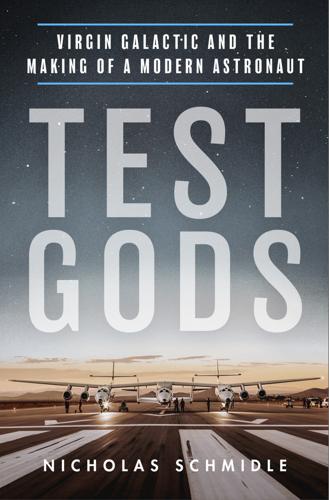
Test Gods: Virgin Galactic and the Making of a Modern Astronaut
by
Nicholas Schmidle
Published 3 May 2021
* * * FOLLOWING THE COLLAPSE of the Soviet Union, Russia had devolved into a nuclear-armed pawn shop, with anything you desired—minerals, guns, people—available for the right price. Even a seat on a rocket. In 1990, a Japanese TV station paid an estimated $12 million to send one of its reporters into orbit to tape broadcasts and make a documentary about the rain forest. The reporter conducted experiments on Japanese tree frogs. Others went, too, including Dennis Tito, an L.A.-based investment manager who, in 2001, paid the Russians $20 million for a ride to the International Space Station. Tito, and others who followed, got the full experience—feeling the fuel slosh in the tank during liftoff; the “moments of terror” mixed with “pure joy” that followed; the lonely sound of ticking alarm clocks that filled the cabin after burnout, “like waking up inside the workshop of an old Swiss clockmaker”; the sight of a purple-hued galactic sunset reflecting off the trusses of the space station.
…
they billed the Japanese TV station: Thomas Ginsburg, “Japanese Company Critical of Soviet Business Practices,” Associated Press, December 8, 1990. Tito inherited his ticket from: Fisher, “Very Stunning, Very Space, and Very Cool.” NASA officials barred him: Peter Jennings, “NASA and Russia Feud over Millionaire Dennis Tito Going Along for Ride to International Space Station,” World News Tonight transcript, March 20, 2001. later threatened to bill him … listening to opera on his headphones: Todd Venezia, “NASA to Space Tourist: You Owe Us,” New York Post, May 6, 2001. “I just came back from paradise”: Marcus Warren, “Trip Was Out of This World, Says First Space Tourist,” Telegraph (UK), May 7, 2001.
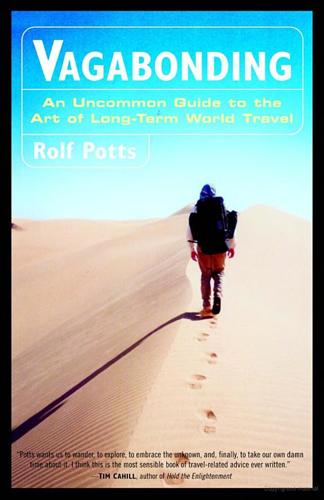
Vagabonding: An Uncommon Guide to the Art of Long-Term World Travel
by
Rolf Potts
Published 24 Dec 2002
As a result, the “final act” of adventure has been declared with each new global discovery or development over the last two centuries, from the exploration of inner Africa to Hillary and Norgay’s ascent of Everest. In recent years, the very notion of adventure travel has sometimes been written off as a self-deluded farce. In 2001, when millionaire Dennis Tito paid $20 million to travel into space with Russian cosmonauts, pundits groaned in disdain. “A tourist in space illustrates an age in which there are very few places left where adventure travel can’t be found,” wrote Boston Globe editor H. D. S. Greenway. “No remote village in the Himalayas or jungle clearing in Borneo is beyond tourism’s reach.”
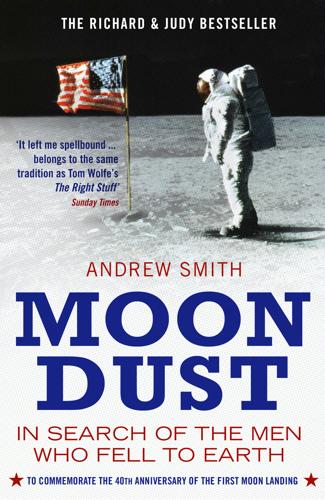
Moondust: In Search of the Men Who Fell to Earth
by
Andrew Smith
Published 3 Apr 2006
Johnson himself would have stood and cheered, he quotes a few obliquely instructive lines from Nirvana’s “In Bloom” at the bemused throng. He talks for a while about the Earth being at the centre of an expanding bubble of life and the challenge of redefining the boundaries between public and private endeavour in this new realm. Then he slickly hands over to a panel of experts, the first of whom is Dennis Tito, the mathematician who traded NASA for Wall Street, then chose to spend some of the millions his skills there brought him on becoming the first space tourist. Against NASA’s wishes, he went up with the Russians and stayed at the International Space Station for a fee that the papers reported as $20 million, but was in fact more like $12.5 million.
…
There are still a lot of platitudes and things I’ve heard before, like, “I sort of look upon it [the Moon] as an old friend,” and, asked about the view of Earth, “It’s an oasis, very, very precious, and we’ve got to take care of it … we’re doing a lousy job …” and, regarding millionaire space tourists like Dennis Tito, “I think people who have that much money should sponsor a fund to send an artist or a poet up there.” Someone raises a hand and says: “My five-year-old son would like to know what’s it like to walk on the Moon?” To which Scott offers a prosaic description of its pristine appearance which will have had as much purchase on a five-year-old’s imagination as a command to tidy his bedroom.

A First-Class Catastrophe: The Road to Black Monday, the Worst Day in Wall Street History
by
Diana B. Henriques
Published 18 Sep 2017
These “beta books” were forerunners of the enhanced “beta” assessments that Barr Rosenberg at Berkeley would develop with such success a few years later. O’Brien unwisely sold the business to a partner: Clowes, The Money Flood, p. 111. The partner was his former Oliphant employee Dennis Tito, whose previous employers included the NASA Jet Propulsion Laboratory. In 2001, Tito became the first private citizen to “buy a ticket” to outer space, paying $20 million to travel on a Russian spacecraft to the International Space Station. See online Encyclopedia Britannica entry for Dennis Tito. he was routinely scouting for new ideas: Leland–O’Brien interview 2014. Best of all, he was a gifted communicator: “Some people have said that he is the ultimate salesman,” one observer noted.

On the Future: Prospects for Humanity
by
Martin J. Rees
Published 14 Oct 2018
The exploitation of space need not be of this nature; it may need some public regulation, but the impetus can be private or corporate. There are plans for week-long trips round the far side of the Moon—voyaging farther from Earth than anyone has gone before (but avoiding the greater challenge of a Moon landing and blast-off). A ticket has been sold (I’m told) for the second such flight but not the first. And Dennis Tito, an entrepreneur and former astronaut, has proposed, when a new heavy-lift launcher is available, to send people to Mars and back—without landing. This would require five hundred days in isolated confinement. The ideal crew would be a stable middle-aged couple—old enough to not be bothered about the high dose of radiation accumulated on the trip.

50 Future Ideas You Really Need to Know
by
Richard Watson
Published 5 Nov 2013
As such, Alt.Space companies are competing directly with NASA and other national or international government space organizations. Who, just a few decades ago, would have thought that billionaires would one day be in a race to invade space? The first private passenger on board a rocket (a space tourist) was Dennis Tito, who paid around $10–20 million for a return ticket to the International Space Station via the Russian Space Agency. Others who’ve taken the trip on a Russian Soyuz rocket include Mark Shuttleworth, Anousheh Ansari, Charles Simonyi and Guy Laliberté. As you can see, space tourism is a bit of a man thing, but this may change.

Scotland’s Jesus: The Only Officially Non-Racist Comedian
by
Frankie Boyle
Published 23 Oct 2013
Although I’d hate to think of her shivering in the landing craft when the water teat runs dry, looking at the stars and thinking, ‘The Cheryl Cole God must be angry with me.’ Scientists will first have to perfect turning urine into water. Tricky, though I’ve got away with passing it off as whisky when refilling a hotel minibar. The man behind the Mars space programme is Dennis Tito, who paid $20 million to the Russians in 2001 to be sent into space and who to this day holds the record for the longest period anyone’s spent being jiggled about in a blacked-out caravan in the car park of a Moscow Halfords. There’s also talk that the European Space Agency is to mount a €1 billion mission to Jupiter.
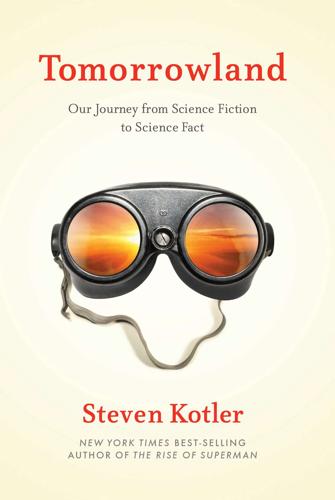
Tomorrowland: Our Journey From Science Fiction to Science Fact
by
Steven Kotler
Published 11 May 2015
In fact, in April 2012 — and with backing from the likes of Google cofounder Larry Page, Google executive chairman Eric Schmidt, and Virgin founder Sir Richard Branson — Peter Diamandis, creator of the XPRIZE, alongside Eric Anderson, CEO of Space Adventures Ltd. (the private space tourism company that flew Stephen Hawking into zero-G and sent billionaire Dennis Tito to the International Space Station), announced Planetary Resources Inc. (PRI), a newly formed asteroid mining company. This time, it was Comedy Central host Jon Stewart who summed things up nicely: “Space pioneers going to mine motherfucking asteroids for precious materials! BOOM! BOOM! YES! Stu-Beef is all in.
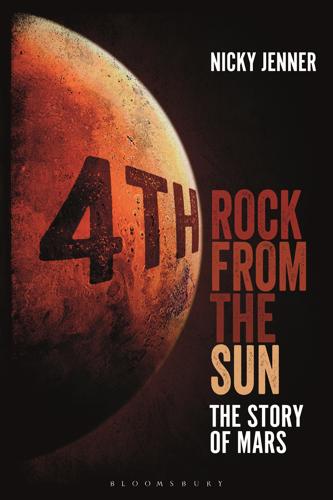
4th Rock From the Sun: The Story of Mars
by
Nicky Jenner
Published 5 Apr 2017
Branson has spoken of his desire and determination to ‘[be] a part of starting a population on Mars’ within his lifetime, but has no firm plans. A few years ago two different private agencies, Mars One and the Inspiration Mars Foundation, prominently challenged NASA’s aim of sending humans to Mars by the mid-2030s, proclaiming they could do it far more quickly. The Inspiration Mars Foundation was founded by entrepreneur Dennis Tito in 2013. It was immediately viewed as overambitious; the organisation was aiming for a manned mission to Mars in 2018, but no landing – a fly-by. While this would still be difficult, with no landing, rendezvous, docking or other complex manoeuvres it was potentially feasible on such a short timescale.
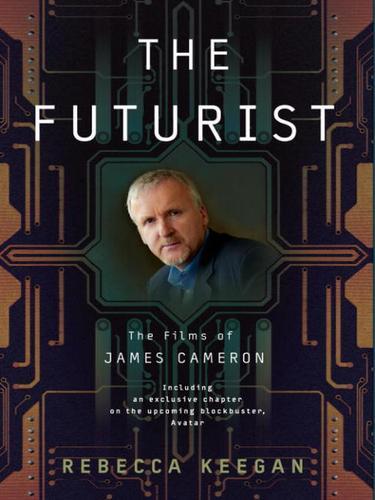
The Futurist: The Life and Films of James Cameron
by
Rebecca Winters Keegan
Published 3 Nov 2009
But by the time Cameron returned to the United States, the Mir space station was being shut down due to lack of funding. Energya called Cameron and proposed that he go to the International Space Station instead, which sounded great to him but meant involving NASA, a cautious bureaucracy that had just been embarrassed by the first space tourist, Dennis Tito, arriving on a Russian ship without NASA’s blessing. “I said that I didn’t just want to be a space tourist,” Cameron recalls. “I wanted to stay on the ISS for a month and make a 3-D film about living and working in space.” Cameron’s filming mission was gaining momentum. He got commitments for nearly $30 million in funding, but he needed more, for insurance.
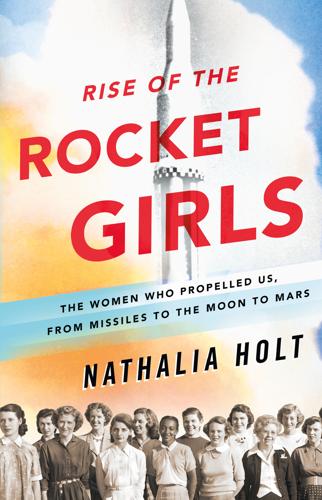
Rise of the Rocket Girls: The Women Who Propelled Us, From Missiles to the Moon to Mars
by
Nathalia Holt
Published 4 Apr 2016
A year later it was Helen’s turn to retire. She was ready to go; there were no regrets. The room swelled as engineers from decades of JPL’s history, even some from the 1950s, came to share their memories in tribute. Everyone loved Helen. She smiled at the crowd of familiar faces and warmly embraced Dennis Tito, a former engineer at JPL turned billionaire space tourist, who had come to celebrate his favorite human computer. In the heat of the late afternoon they talked about old times, no trace of tears on their cheeks, since they knew that the friendships they formed would long outlive their careers in the lab.

Affluenza: The All-Consuming Epidemic
by
John de Graaf
,
David Wann
,
Thomas H Naylor
and
David Horsey
Published 1 Jan 2001
The link offers photos of, among other things, a Hummer in a standoff against a buffalo, another proudly knocking aside trees as it plows up an incline in a forest, and a third nearly submerged in a pretty mountain stream. Now what will Ford counter with, an even bigger SUV called the Extinction? WEIGHTLESS TOURISM Hummers on the streets of Manhattan. You might call them Saddam’s revenge. Or Ho-Hummers, if you compare them with yet another way to drop big bucks. In 2001, American Dennis Tito became the world’s first space tourist, for only $20 million. The next year, South African Mark Shuttleworth followed, for the same price.6 In June 2004 SpaceShipOne took off on its first flight, rising sixty-two miles above Earth and entering officially into space.7 Soon, seats will be available for as little as $100,000.
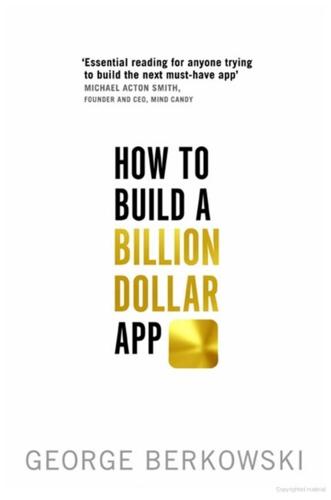
How to Build a Billion Dollar App: Discover the Secrets of the Most Successful Entrepreneurs of Our Time
by
George Berkowski
Published 3 Sep 2014
After I had done a stint at a French business school, the spectacular story of MirCorp caught my interest. MirCorp was the company that tried to turn the Russian MIR space station into the first commercial orbital hotel. (In the end the hotel bit didn’t work out, but MirCorp did deliver the world’s first space tourist – Dennis Tito – to the International Space Station in 2001.) I hunted down the MirCorp founders, and cornered them at a conference in Amsterdam. A couple of weeks later I had a job. I used my tried and tested strategy: try me out for free (I offered to make them the subject of my business-school research thesis) and, if it doesn’t work out, don’t pay me.
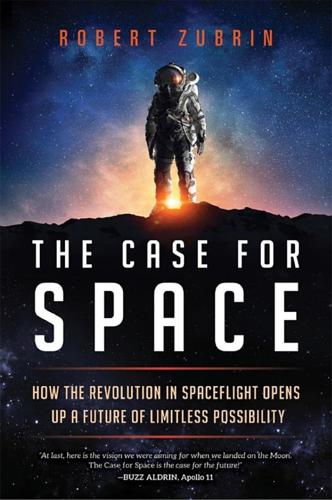
The Case for Space: How the Revolution in Spaceflight Opens Up a Future of Limitless Possibility
by
Robert Zubrin
Published 30 Apr 2019
Indeed, if there is a practical flaw in Musk's personality, I would say that it is his difficulty in sharing credit with others. That is why the public has very little knowledge of the rest of the SpaceX team. This could cost him some of his best talent in the end. It also makes it difficult for him to join forces with others—for example, when, in 2013, billionaire Dennis Tito started his Inspiration Mars effort to launch a two-person Mars flyby mission, Musk gave him the cold shoulder.6 But I don't think his aloofness is due to egomania. Rather, I think that what fundamentally drives Musk is a desire for what the ancient Greeks called kleos—eternal glory for doing great deeds.
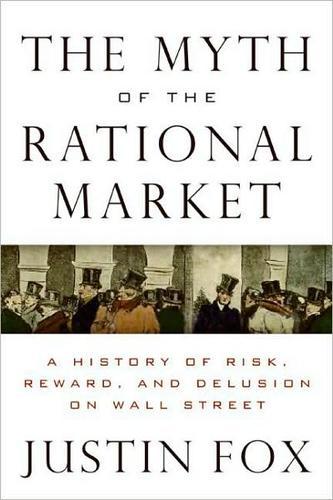
The Myth of the Rational Market: A History of Risk, Reward, and Delusion on Wall Street
by
Justin Fox
Published 29 May 2009
He then founded a small brokerage firm, with offices on Wilshire Boulevard in Los Angeles, that advised pension funds on how to pick money managers and allocate their investments. O’Brien Associates, as it was called, also launched its own all-market stock index, the O’Brien 5,000. In 1971, O’Brien became worried that his little firm would not survive the looming deregulation of brokerage commissions. He sold out to his more optimistic number two, Dennis Tito, and took a job with a larger brokerage, A. G. Becker of Chicago, that did performance measurement for money managers. It was a bad decision. The old firm thrived as Wilshire Associates, with Tito making enough money to pay his way into orbit years later as the first-ever space tourist. The O’Brien 5,000 became the Wilshire 5,000.